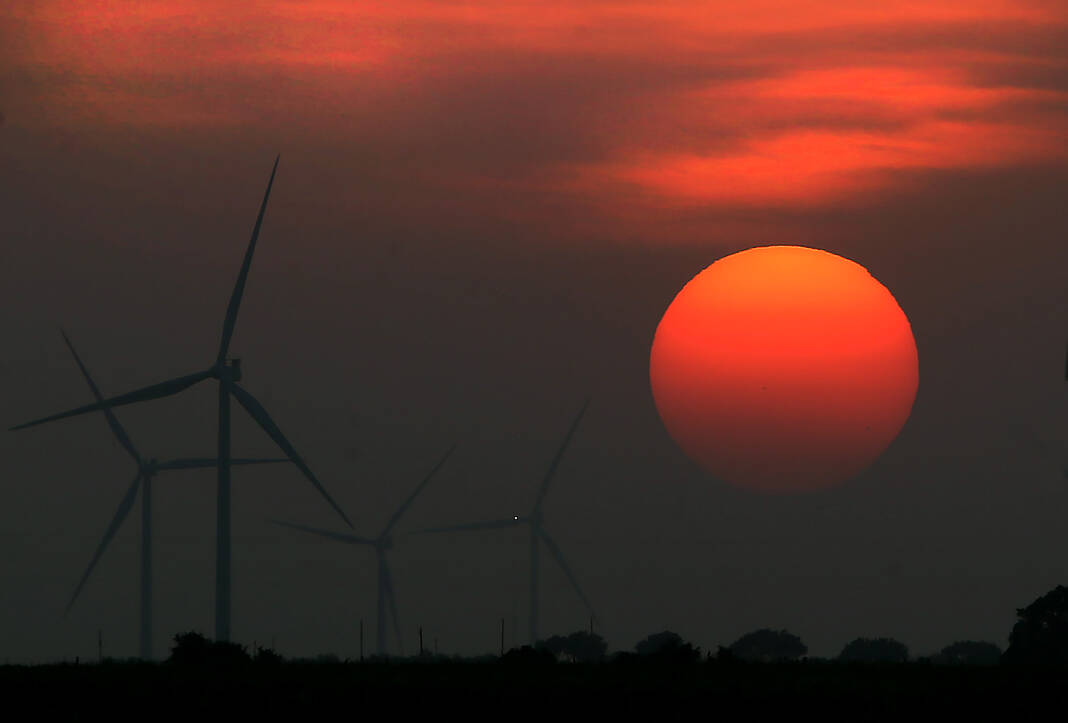Hospital officials in the Rio Grande Valley are acknowledging a rise in cases of heat exhaustion and heat stroke as temperatures continue to skyrocket across the region, and they say it’s not over yet.
Temperatures have rested well above 100 degrees for much of the summer, which has only added to burn hazards which when coupled with dry conditions helped spawn wildfires in the region and throughout the state. But concerns of heat sickness for all under the sun have also risen, and now those in the local medical community said this week that there’s been cause for those concerns after seeing an uptick in these cases.
Dr. Adam Benzing of Valley Baptist Medical Center in Harlingen spoke candidly Wednesday about what exactly he has seen that has raised concerns due to heat-related illnesses and incidents.
Although medical health professionals have seen an increase in heat exhaustion and heat stroke, these aren’t the only dangers facing the region.
“… Most people coming into the emergency department regardless of their complaint are dehydrated to some degree,” Benzing said before explaining that, in addition to specific symptoms of heat exhaustion and heat stroke, he’s also seen many cases of general dehydration.
“A lot of people whether they realize it or not are kind of set somewhat at risk for heat injury because they are already starting at baseline not being well hydrated,” Benzing added.
According to Benzing, this is caused by long spans of high temperatures which do not allow people to fully recover from heat exposure day to day.
“The higher the heat and the longer it lasts the more people that we’ll continue to see get more and more sick,” Benzing added. “Globally, heat injuries and heat waves are actually the deadliest of natural disasters.”
During times like these, when extreme heat has become the norm, people have to be more conscious of drinking a full glass of water before walking out the door every day.
If you feel thirsty, your body is likely already lacking water. Benzing said to listen to your body during these times, react proactively.
“When it comes to heat injuries and heat risk the best thing you can do is prevention and planning ahead and a big part of that is making sure that you are starting every day well hydrated,” Benzing said.
Dr. Jeffrey Skubic, a trauma surgeon at DHR Health in Edinburg, has seen a similar rise in heat exhaustion and heat stroke.
Like Benzing, Skubic also highlighted the need for hydration, but noted that people should be conscious of other deficiencies and dangers caused by excessive perspiration.
“Remember that when you sweat you don’t only lose water but you lose salt and water. You actually lose a higher proportion of salt,” explained Skubic, adding that if one only drinks water after excessive sweating they are running the risk of entering a hyponatremic state.
According to Dr. Jeffrey Skubic, a trauma surgeon at DHR Health in Edinburg, it’s important to know the differences between heat exhaustion and heat stroke and how to prevent it.
Hyponatremia is a state in which the body has a low sodium concentration level. According to Skubic, the normal salt levels range from 135 to 145 milliequivalents per liter of blood; however, if one’s salt level drops below 120 milliequivalents he recommends going to the hospital due to dangerously low salt levels.
One can check their sodium levels with a hydrometer, which is a tool that looks not unlike a thermometer and that measures sodium levels in your body. It can be purchased at most grocers.
“Replace what the body is losing. If the body is losing salt water you want to replace it with salt water. You need to drink either electrolyte water, Gatorade, or any of that kind of electrolyte drinks that have sodium and usually potassium as well,” Skubic said.
According to Skubic there are various key signs to look out for when determining if someone is experiencing heat exhaustion or a heat stroke.
During heat exhaustion, a person’s body will attempt to cool itself down causing one’s skin to feel “cool and clammy.” During these situations, Skubic recommends finding a shaded area and drinking fluids with electrolytes to help one’s body recover from extreme heat exposure.
“When you touch someone and they are full of sweat and their shirt is wet and their arms, forehead and everything is soaked in sweat — that should actually make you feel good that their body is still conducting its naturally cooling down mechanism,” said Skubic, adding that once a person reaches heat stroke levels their body will no longer be able to produce sweat. “If they get to the point that their body system is overwhelmed and now their skin is dry, that is actually a bad sign.”
Once a person’s skin begins to feel dry rather than clammy they should be transported to a hospital where they can receive proper hydration.
Although hospitals are seeing a rise in heat-related injuries, Benzing said they are also seeing water-related injuries that occur in areas such as pools, and stressed precautions for those trying to cool off.





